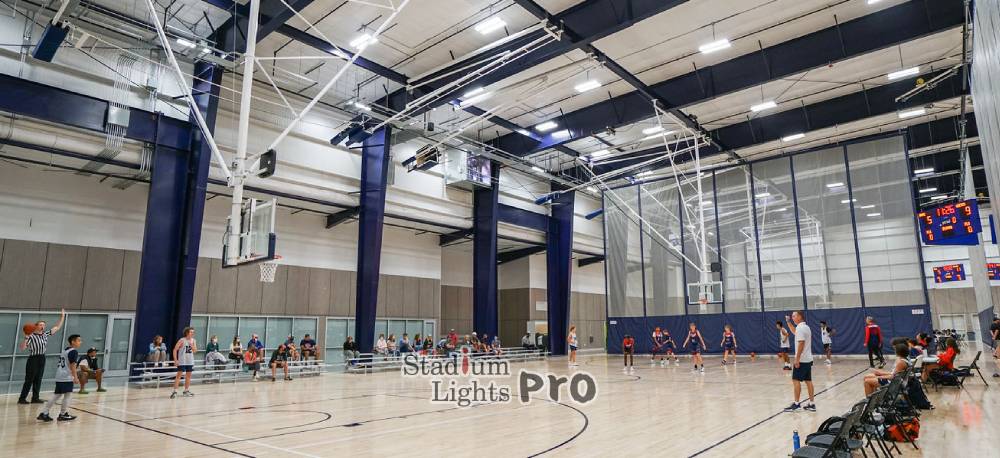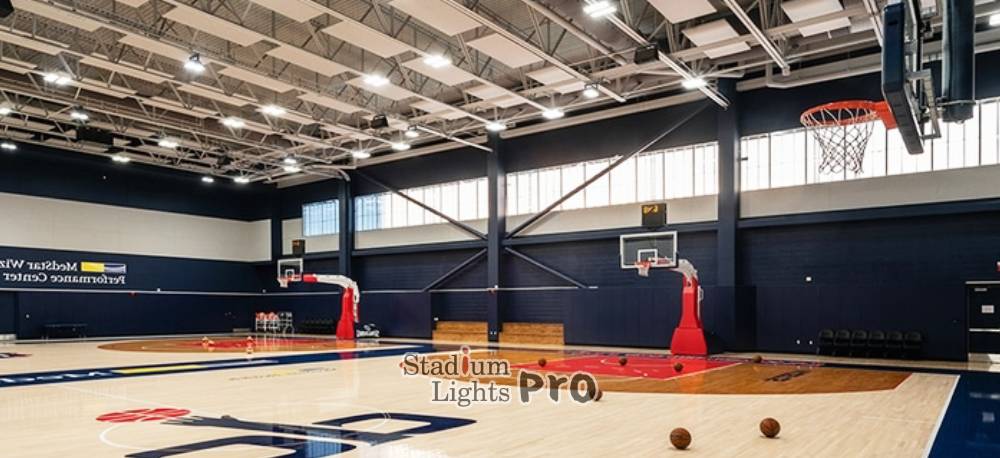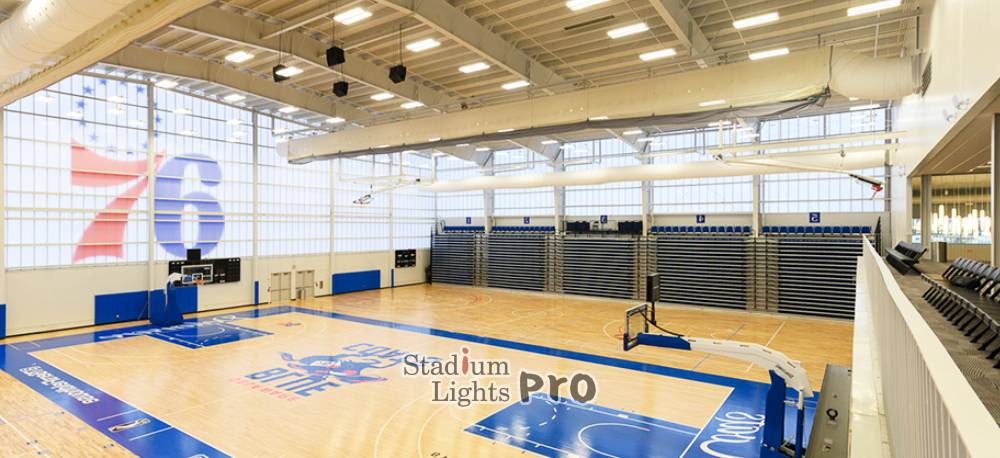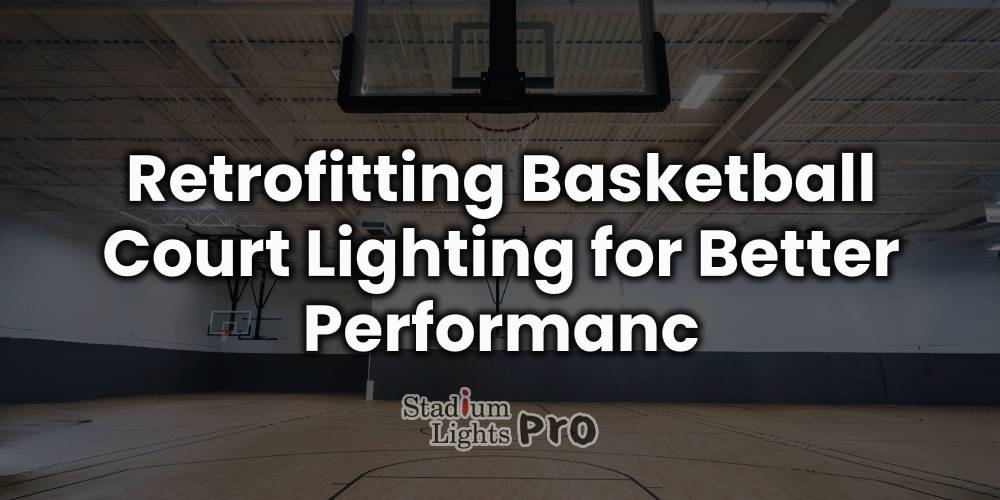Basketball courts, whether indoor or outdoor, rely on proper lighting to enhance both performance and safety. When the lighting system begins to age or become inefficient, it not only impacts the visibility of the game but also elevates operational costs. Replacing outdated lighting with modern solutions is an investment that pays off in terms of player experience, energy efficiency, and long-term savings. This guide explores the reasons for upgrading basketball court lighting, the types of lighting available, the impact of lighting on player performance, and offers practical advice on replacing and maintaining the system.
Table of Contents
ToggleWhy Replace Basketball Court Lighting?
Replacing basketball court lighting is a worthwhile investment. Over time, older systems become less effective, leading to dim lighting and uneven coverage, which can reduce the quality of play. Updating lighting solutions can significantly enhance the overall experience for both players and spectators, as well as improve energy efficiency. Below are several reasons why upgrading the lighting system makes sense.
Improved Visibility and Player Performance
When players cannot clearly see the ball, their teammates, or the basket, their performance suffers. Poor lighting on a basketball court can lead to missed shots, slower reactions, and accidents. Replacing outdated lighting with a more uniform and bright solution ensures that players can see clearly at all times. This not only improves their gameplay but also reduces errors related to poor visibility, such as misjudging a pass or failing to spot an opponent.
Energy Efficiency and Cost Savings
Older lighting technologies, like incandescent and fluorescent bulbs, consume much more energy compared to modern alternatives like LEDs. Upgrading to energy-efficient lighting can reduce a facility’s electricity consumption, leading to substantial savings over time. Additionally, newer lighting systems last much longer than older technologies, reducing the frequency and cost of replacements and maintenance.
Enhanced Aesthetic Appeal
Lighting plays a significant role in creating an engaging atmosphere on the basketball court. Proper lighting can elevate the look of the space, making it visually appealing to spectators. A well-lit court creates an exciting environment for games and tournaments, which enhances the overall experience for everyone involved, from the players to the audience.
Signs Your Basketball Court Needs New Lighting

Recognizing when it is time to replace the lighting system can save both time and money. Several signs indicate that the current lighting setup may be underperforming and in need of an upgrade.
Flickering or Dim Lights
Over time, lights can flicker or grow dim, even after the bulbs have been replaced. Flickering light can cause distractions during play, affecting both the players and officials. Dim lighting reduces visibility, which can lead to mistakes and increase the risk of injury. If the lights constantly require maintenance or don’t shine as brightly as they used to, it may be time for a replacement.
Uneven Lighting Distribution
One of the most common issues with older lighting systems is uneven light distribution. This can create shadows or areas that are too bright, leading to poor visibility for players on different sections of the court. Uneven lighting can make it difficult for players to judge the position of the ball, or even the height of the hoop. It also can make the court feel less safe, as some areas may be inadequately lit.
High Energy Consumption
Older lighting technologies tend to consume more power compared to newer, more efficient systems. Facilities often experience a significant increase in their electricity bills due to the inefficiency of the lighting. Replacing these older systems with modern LED lights can drastically reduce energy consumption, leading to lower operational costs.
Types of Lighting for Basketball Courts

When replacing basketball court lighting, it is essential to choose the right type of fixture. The choice of lighting can influence both the quality of play and the cost-effectiveness of the upgrade. There are several types of lighting available for basketball courts, each with its own advantages and drawbacks.
LED Lighting
LED lights have become the preferred option for basketball courts due to their energy efficiency, brightness, and longevity. These lights provide even illumination across the court, which is important for visibility and player performance. LED lights use less power and have a longer lifespan than traditional lighting, reducing both energy bills and the frequency of replacements. They also offer a wide range of color temperatures, allowing for a customizable lighting experience based on the type of game or event.
Metal Halide Lighting
Metal halide lights are another option commonly used in sports arenas and gymnasiums. These lights provide bright, clear lighting, but they tend to use more energy compared to LEDs and have a shorter lifespan. While metal halide lights are effective for basketball courts, their high energy consumption and frequent need for replacement make them less favorable in the long run. Furthermore, they take longer to warm up and reach full brightness after being turned on.
Fluorescent Lighting
Fluorescent lighting, while once a common choice for sports courts, is becoming less popular due to its inefficiency and shorter lifespan. Fluorescent lights provide cool, bright light, but they are not as energy-efficient as LEDs. Additionally, they can flicker and degrade over time, affecting performance. These types of lights are now typically replaced by more modern lighting solutions like LEDs.
| Type of Lighting | Energy Efficiency | Lifespan | Brightness | Warm-Up Time |
|---|---|---|---|---|
| LED | High | 50,000 hrs | High | Instant |
| Metal Halide | Moderate | 15,000 hrs | High | 5-10 minutes |
| Fluorescent | Low | 10,000 hrs | Moderate | Instant |
Choosing the Right Lighting for Your Court
Selecting the right lighting system for your basketball court is crucial to ensure optimal performance and energy efficiency. Several factors should be taken into account when choosing the lighting, such as brightness, color temperature, and evenness of light distribution.
Color Temperature
The color temperature of the lights determines the type of light they emit, ranging from warm (yellow) to cool (blue). For basketball courts, a cool white light, with a color temperature between 4,000K and 6,500K, is ideal. This range provides a natural daylight effect, which enhances visibility and reduces eye strain. A cooler light also mimics daylight, making it easier for players to focus on the game.
Uniformity of Light Distribution
Even light distribution across the court ensures that there are no dark spots or glaringly bright areas. Uniform lighting is important for both safety and performance. Uneven lighting can cause players to misjudge passes, shots, or movements, which may lead to mistakes or accidents. Therefore, a well-designed lighting system should provide consistent illumination across the entire playing area.
Brightness and Lux Levels
Brightness is one of the most important factors when it comes to basketball court lighting. Lux levels, which measure the amount of light falling on a surface, are essential in determining whether the lighting is sufficient. A basketball court typically requires between 300 to 500 lux, depending on the level of competition (e.g., recreational vs. professional games). Ensuring that the court is adequately lit at all times allows for better visibility and player safety.
| Activity | Required Lux Level |
|---|---|
| General Practice (Recreational) | 300 lux |
| High School Games | 500 lux |
| College Games | 750 lux |
| Professional Games (NBA) | 1,000 lux |
| Outdoor Courts (Daytime Play) | 150-300 lux |
Impact of Lighting on Basketball Performance
The quality of lighting directly affects the players’ performance and safety on the court. Proper lighting enhances visual clarity, reduces eye strain, and ensures that players can focus on the game without distractions.
Enhanced Visual Clarity
Clear visibility is essential for players to track the ball, anticipate movements, and make quick decisions. A properly lit court allows players to see every action clearly, from the dribble of the ball to the movements of teammates and opponents. This improved visual clarity helps players to react faster and perform better under pressure.
Reduced Eye Strain

Dim or flickering lights can strain the eyes, causing discomfort and fatigue. When eyes are strained, players are less likely to be able to maintain focus throughout the game. Well-lit courts with bright, even illumination reduce this issue, allowing players to stay focused on the game for longer periods. Additionally, the absence of flickering lights prevents players from being distracted or disoriented.
Improved Safety
Safety is another consideration when it comes to basketball court lighting. Poorly lit courts can lead to accidents or injuries. For example, players may not see an obstacle in their path, such as a player or the court’s boundaries. Even lighting ensures that all areas of the court are visible, minimizing the risk of accidents and improving safety for players.
Boosting Player Confidence and Focus
When players feel confident in their ability to see clearly, their focus improves, which enhances their performance. Proper lighting creates a comfortable environment for players, boosting their confidence and making them feel more engaged in the game. This positive effect on player mentality can be the difference between a win or loss, especially in high-pressure situations.
Step-by-Step Guide to Replacing Court Lighting
Replacing basketball court lighting involves a systematic approach to ensure the new system meets the needs of the facility. The process includes assessing the space, selecting fixtures, installing the system, and ensuring everything works properly.
Assessment and Planning
Before upgrading the lighting system, it is important to assess the size, layout, and usage of the court. An indoor court may require different lighting considerations than an outdoor court, such as the need for waterproof or weather-resistant fixtures. Understanding the specific needs of the court will help in selecting the most appropriate lighting solutions.
Choosing Fixtures and Equipment
Once the requirements are clear, selecting the fixtures and lighting system is the next step. The number of lights required will depend on the court’s size and layout. It’s essential to choose fixtures that offer the right brightness, uniformity, and energy efficiency to optimize the court’s performance.
Installation Process
Installing new lighting involves either hiring professionals or performing a DIY installation. If opting for a professional installation, it is crucial to hire a certified technician who understands electrical systems and safety protocols. If handling the installation yourself, ensure all safety measures are followed to avoid accidents and damage.
Testing and Adjustments
Once the new system is installed, it is necessary to test the lighting to ensure it is functioning properly. This includes checking for uniform brightness, verifying that there are no dark spots or overly bright areas, and adjusting fixtures to optimize coverage. Proper testing ensures that the lighting system meets all specifications.
Maintenance Tips for Long-Lasting Basketball Court Lighting
Proper maintenance of the lighting system will ensure its longevity and optimal performance. Regular care and attention to the lighting system can help avoid costly replacements and ensure the court remains safe for play.
Regular Cleaning and Inspection
Over time, dirt and dust can accumulate on the fixtures, reducing their effectiveness. Regularly cleaning the lights and inspecting them for damage or wear will keep them functioning at their best. Clean the lenses or covers of the lights to allow maximum light output.
Checking Electrical Connections
Maintaining proper electrical connections is key to the lighting system’s performance. Over time, wiring can become loose or frayed, leading to power issues or even electrical hazards. Periodic checks can help identify and address these problems before they become serious.
Replacing Bulbs and Components
Even with regular maintenance, some components will eventually need to be replaced. It’s important to monitor the condition of the bulbs and replace them as necessary to prevent dimming or flickering. This ensures the lighting remains effective and the court stays properly illuminated.
Conclusion
Upgrading basketball court lighting brings numerous benefits, from enhancing player performance to lowering energy costs. By choosing the right lighting system and maintaining it properly, facilities can ensure that their courts provide optimal conditions for play. Whether upgrading to LEDs or another advanced system, the decision to replace old lighting can positively impact both the players and the facility’s bottom line.

